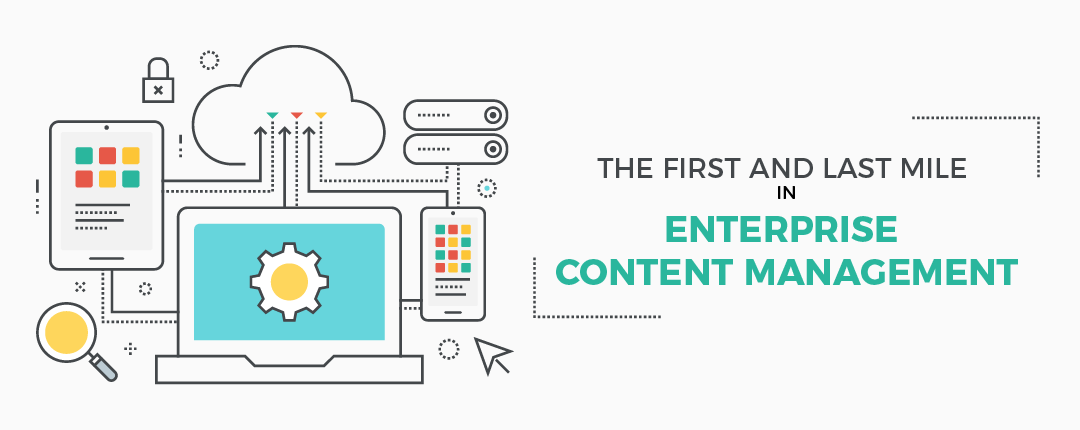By Steve Studer
 In all the industries I’ve worked, every customer has likely heard the colloquial phrases “first mile” and “last mile.” Typically, these phrases describe the challenging first steps towards adopting a new idea or technology and the last steps in getting mass adoption. This is done by making the technology as seamless as possible. Interestingly, many times it’s the Yin and Yang of the first and last mile where customers find the most challenges—usually because it’s hard tell where the content process starts and where it will end.
In all the industries I’ve worked, every customer has likely heard the colloquial phrases “first mile” and “last mile.” Typically, these phrases describe the challenging first steps towards adopting a new idea or technology and the last steps in getting mass adoption. This is done by making the technology as seamless as possible. Interestingly, many times it’s the Yin and Yang of the first and last mile where customers find the most challenges—usually because it’s hard tell where the content process starts and where it will end.
Having spent a career addressing and solving many customer challenges relating to enterprise content management (ECM), I want to share how Zia Consulting approaches the first and last mile challenges.
First Mile in ECM—Structuring Unstructured Content
For years, I’ve described ECM as a library sciences approach to managing unstructured content. It’s a process of classifying any content that does not have a pre-defined data model or is not organized in a pre-defined manner. Unstructured data makes up 80% all information found in an organization and it is growing the rate of 55–65% per year. Just like a library, the importance of structuring is to make information more accessible. A key to structuring unstructured information is applying metadata which helps to organize and summarize basic information making easier to find and navigate to desired content.
Critical Step—Gaining User Adoption Through Digital Transformation
User adoption is one of the greatest challenges in ECM. While everyone wants instant and organized access to all information, applying a library sciences approach is only effective when people understand how to file, navigate, and access content uniformly. The more you can digitally transform the filing, navigation, and correct access to content, the fast user adoption becomes. Automation of these processes is critical, users do not want to become librarians and, furthermore, they are not inclined to access a library of information if they have to go out of their way to do so.
Digital transformation requires a solid understanding of the content producers, consumers, reviewers, and approvers. It is also important to understand how content and the information it contains is used in upstream and downstream processes, decision making or actions to take and how to make the information transfer as effortless and frictionless as possible.
Unstructured content originates from a wide variety of sources. It’s scanned from paper, received in emails, generated from other systems, or found on shared drives. Regardless of whether it’s internally or externally generated, the key to effectively organized content is applying consistent and accurate classification. This is crucial to gaining user acceptance because it impacts every aspect from searching, processing, disseminating, and governing content effectively.
Last Mile in ECM—Pick the Right Tool for the Job
Picking the best ECM solution is like picking the best mode of transportation. As a systems integrator, our job is to effectively communicate the business value of implementing a particular ECM solution based on the end-to-end business needs.
Most customers have multiple ECM technologies or are using another specific application software to store and manage content. The questions that need to be asked are what is the end result and how do you make the information transfer frictionless so that it gets to the right people.Our goal is to streamline the process in the most efficient format and timely in manner.
To learn more about our offerings and how we make migration a simple process—that doesn’t interrupt your daily business—read our white paper or contact us today.

